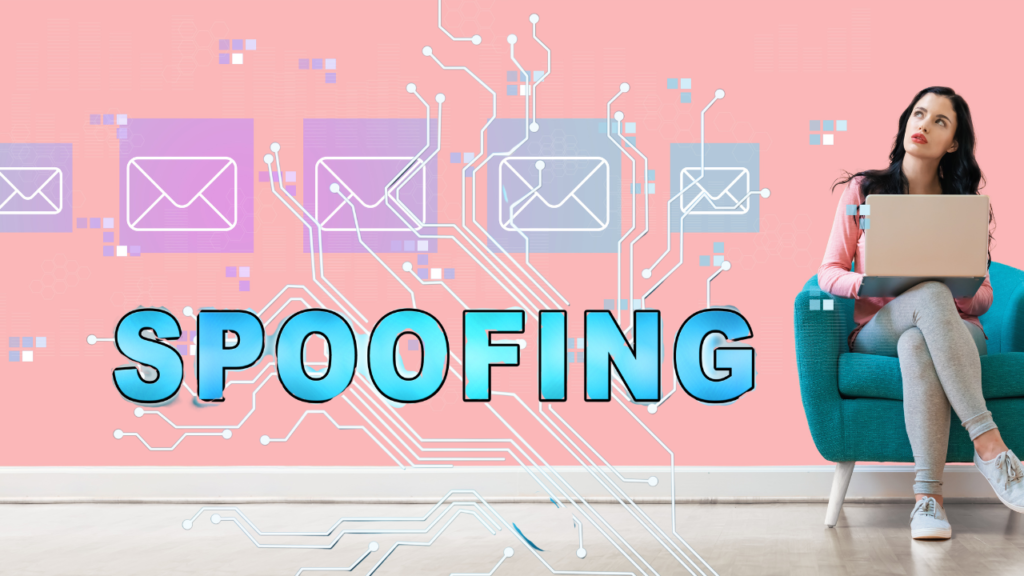In the realm of computer network security, email-based threats have emerged as a significant concern for individuals and organizations alike. The evolution of sophisticated cyber threats, notably email spoofing and phishing, has paralleled the advancement of digital communication. Understanding these threats is paramount in safeguarding sensitive information and maintaining online security.
This article aims to demystify these concepts, highlighting their differences, impacts, and the measures one can take to safeguard against them.
What is Email Spoofing?
In email spoofing, the sender alters the address in an email to make it appear as if it’s from a legitimate source. Typically, senders use this manipulation to gain the recipient’s trust, making it easier to disseminate malware or conduct fraudulent activities.

How Email Spoofing Works
The process is surprisingly simple. The attacker modifies the email header so that the source appears legitimate. This can be done using various techniques, with the goal of making the email look like it comes from a trusted source, be it a personal contact or a reputable organization.
Types of Email Spoofing
Display Name Spoofing: The simplest form, where the attacker changes the display name of the sender.
Direct Spoofing: The attacker accesses an email server and sends an email with a falsified sender address.
Domain Spoofing: The sender’s domain is forged, often resembling reputable domains with slight alterations.
Email Spoofing Tools and Examples
Various tools, some available on platforms like GitHub, facilitate email spoofing. These range from simple software that alters sender information to more complex programs capable of automating large-scale spoofing campaigns. For instance, an email seemingly from a familiar contact asking for sensitive information could be a case of spoofing.
Also Check: Experts’ Choice: Top Network Security Tools You Need to Know
Email Phishing: The Deceptive Lure
Email phishing is a form of cyber attack where attackers masquerade as trustworthy entities in emails to extract sensitive information from victims. These fake emails often contain links or attachments that, when interacted with, can lead to data theft or malware installation.
The Mechanics of Phishing
Phishing emails often create a sense of urgency or fear, prompting the recipient to act quickly without proper scrutiny. These emails might request personal information, direct users to fraudulent websites, or trick them into downloading malicious software.
Varieties of Phishing Attacks
Phishing attacks come in many forms. Some are broad and untargeted, casting a wide net to catch as many victims as possible. Others are highly sophisticated, targeting specific individuals or organizations with personalized information, making them harder to detect.

Email Spoofing vs Phishing: Key Differences
- Both practices exploit the trust of the recipient and use email as the primary tool of deception. However, they differ in their execution and objectives. Understanding these differences is crucial for effective detection and prevention.
- The technical aspect of email spoofing lies in the manipulation of the email header to forge the sender’s identity. In contrast, phishing often involves a broader strategy, including the creation of fake websites and the use of social engineering tactics.
- From a victim’s perspective, email spoofing can be harder to detect as it appears to come from a known contact. Phishing, while also deceptive, often contains telltale signs like generic greetings and grammatical errors.
Conclusion
Navigating the murky waters of email spoofing and phishing requires awareness and proactive measures. Understanding the types, recognizing examples, and employing defensive strategies are crucial in safeguarding against these digital threats. Remember, in the digital world, vigilance is your strongest ally.
For those seeking to enhance their defenses against such sophisticated attacks, consulting with a cybersecurity firm like Nextdoorsec can be a game-changer. Nextdoorsec specializes in identifying and mitigating such threats, offering tailored solutions that fit the unique needs of each organization.
FAQs
1. What is phishing?
Phishing is a type of cyber attack where attackers send fraudulent messages, typically via email, that appear to come from a reputable source. The goal is to trick individuals into revealing sensitive information such as passwords, credit card numbers, or other personal details.
2. What is the difference between phishing and spoofing?
Phishing involves tricking individuals into giving away sensitive information by pretending to be a trustworthy entity in digital communication. Spoofing, on the other hand, refers to the act of disguising communication from an unknown source as being from a known, trusted source. Spoofing can be a part of a phishing attack but isn’t limited to it, as it can involve phone calls, websites, emails, etc.
3. What is the difference between email spoofing and email spamming?
Email spoofing is the act of sending emails with a forged sender address, making it appear as though it comes from a legitimate or trusted source. Email spamming, conversely, involves sending unsolicited, bulk emails, typically for advertising or scam purposes, without necessarily disguising the origin.
4. What is an example of email spoofing?
An example of email spoofing could be an email that appears to come from a well-known bank, asking the recipient to verify account details. The email looks legitimate, with the bank’s logo and branding, but the sender’s address is forged, and the email is actually from a cybercriminal.
5. Is email spoofing a type of phishing?
Email spoofing can be a part of a phishing attack, but it’s not exclusively so. It’s a technique used in phishing to make fraudulent emails seem credible. However, phishing can occur without email spoofing, and email spoofing can be used for purposes other than phishing, such as to avoid spam filters or to prank someone.
6. How to stop email spoofing?
To combat email spoofing, it’s essential to use email authentication methods like SPF (Sender Policy Framework), DKIM (DomainKeys Identified Mail), and DMARC (Domain-based Message Authentication, Reporting, and Conformance). These protocols help verify the authenticity of the sender’s domain. Additionally, educating employees about recognizing spoofed emails and regularly updating security software are effective strategies to minimize the risk of email spoofing.
7. Is email spoofing illegal?
Yes, email spoofing is typically illegal. It often violates laws related to fraud, identity theft, and cybercrime. Many countries have specific legislation that makes it illegal to send emails with falsified sender information, especially if done with the intent to deceive or harm the recipient. However, the legality can vary depending on the country and the specific use of email spoofing.






0 Comments